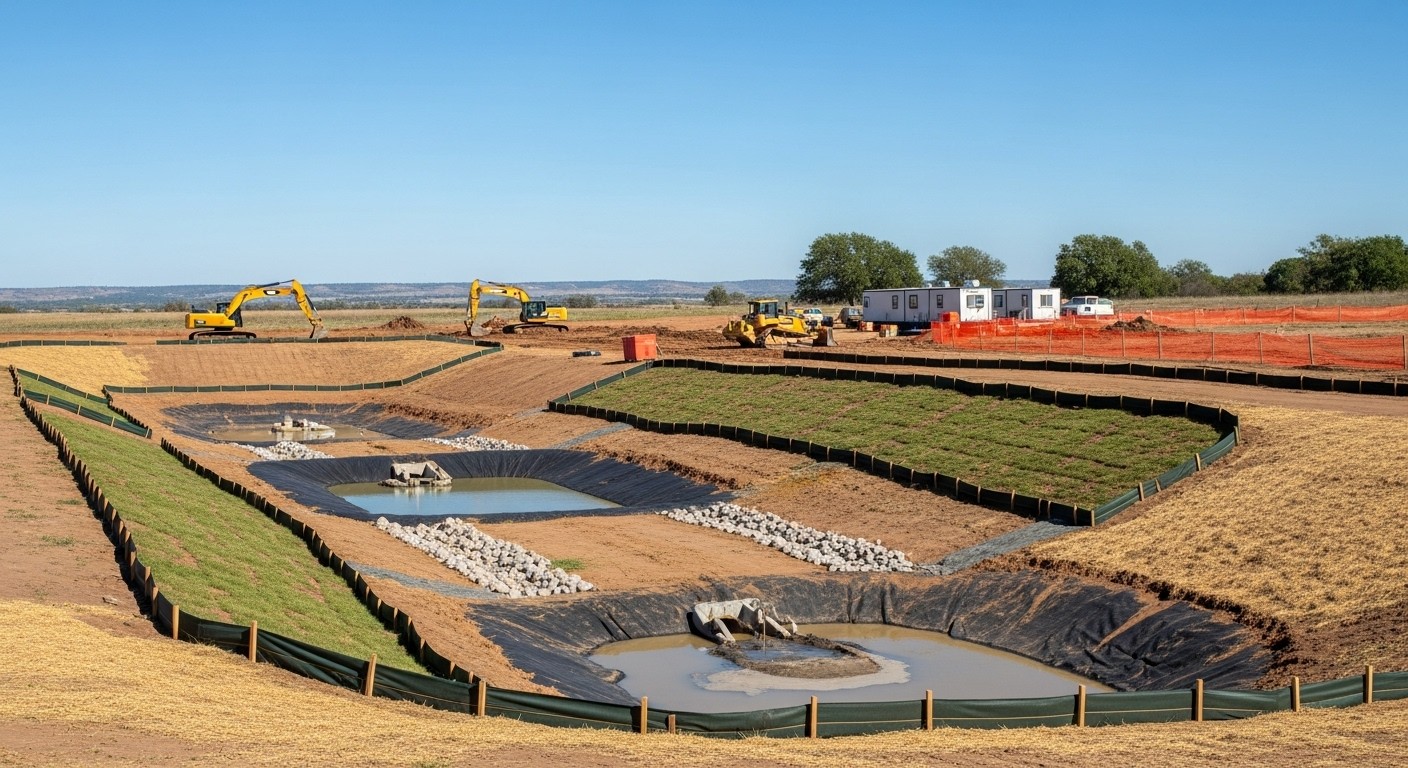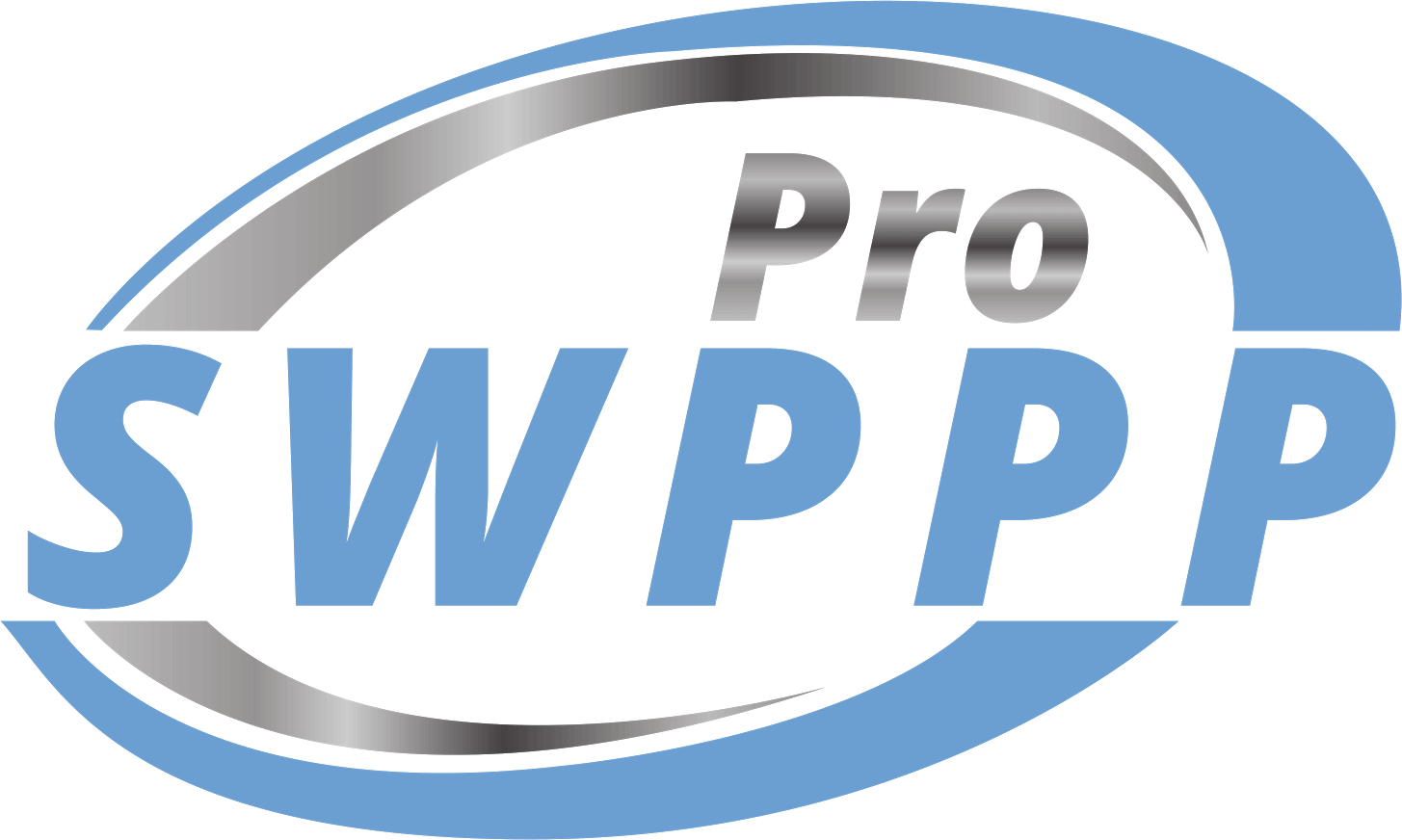The #1 question we get from contractors in Oklahoma is typically: “Do I need a SWPPP or just an NOI?”
Here’s the truth. You’re not alone if you’re confused about Oklahoma’s stormwater requirements. Most contractors are scratching their heads over what paperwork they need to break ground legally.
Let me cut through the confusion. In Oklahoma, if you’re disturbing one acre or more of land, you need both. That’s right – both a Stormwater Pollution Prevention Plan (SWPPP) and a Notice of Intent (NOI). The Clean Water Act doesn’t mess around, and neither should you.

What Oklahoma Contractors Must Know About SWPPP Requirements
The Oklahoma Department of Environmental Quality (ODEQ) runs the show here. They oversee all SWPPP permits under the National Pollutant Discharge Elimination System (NPDES). Think of them as the referees making sure everyone plays by the rules.
Here’s what triggers the requirement: any construction activity that disturbs one acre or more of land or is considered ‘Part of a Larger Common Plan of Development‘. Doesn’t matter if you’re building a strip mall, residential development, or industrial facility. Hit that one-acre mark, and you’re in SWPPP territory.
The OKR10 General Permit is your ticket to compliance. You must submit your Notice of Intent at least 14 days before construction starts. Don’t forget the application fee and annual fee – ODEQ isn’t running a charity.
Don’t want to mess with any of this? Order your SWPPP now with Pro SWPPP CPESC-Certified Turnkey SWPPP Services for Oklahoma.
The Real Cost of Getting It Wrong
Here’s what happens when contractors skip the proper permits or file incomplete SWPPPs. Get shutdown, project delays. Fines. Angry ODEQ inspectors. Regulatory headaches that drag on for months.
I’ve seen contractors lose thousands because they thought they could wing it. One guy in Tulsa had to shut down his entire site for two weeks because his Best Management Practices (BMPs) weren’t up to code. Two weeks of idle equipment and crews sitting at home, costing him precious time and money.
The Oklahoma Department of Environmental Quality conducts inspections. They’re not looking to be your friend. They’re checking if your erosion control measures work, if your sediment control is proper, and if you’re following your SWPPP to the letter.
What Your SWPPP Must Include
Your SWPPP isn’t just paperwork you file and forget. It’s your roadmap for keeping stormwater clean during construction. Here’s what goes inside:
- Site description and map showing all disturbed areas
- Best Management Practices (BMPs) for erosion and sediment control
- Inspection schedule and procedures
- Site waste management practices
- Spill prevention and response procedures
- Personnel training requirements
- Your Custom OKR10 Permit Number
Your erosion control measures need to be specific to your site. Cookie-cutter plans don’t work. What works for a flat lot in Oklahoma City might fail on a sloped site in Broken Arrow.
Sediment control is equally important. Silt fences, sediment ponds, and inlet protection must be sized correctly and installed properly. Get this wrong, and you’re looking at violations during your next inspection. Yeah, the violations we talked about earlier.

How the Stormwater Pollution Prevention Plan Process Works
- Step one is getting your Construction General Permit (CGP) through the OKR10 process. You file your Notice of Intent with all required information and fees. (Of note, Pro SWPPP can handle this Turnkey process on your behalf.)
- Step two is creating your SWPPP before you start construction. This document must be on-site and available during all construction activities. Inspectors will ask to see it.
- Step three is implementation. Your crews need to know what’s in the plan. They need training on spill response, proper BMP installation, and maintenance procedures.
- Step four (final step) is ongoing compliance. Weekly inspections, maintenance of BMPs, and updating your SWPPP as conditions change. This isn’t set-it-and-forget-it work. (Pro tip: Pro SWPPP supports your project from Start to Finish.)
Common Mistakes That Cost Contractors Money
Mistake number one: Waiting until the last minute. Filing your NOI 13 days before construction starts leaves zero margin for error. ODEQ processing delays could shut down your project start date.
Mistake number two: Copying someone else’s SWPPP. Each site is unique. Soil types, slopes, drainage patterns, and nearby water bodies all affect your plan requirements.
Mistake number three: Poor BMP maintenance. Installing silt fences means nothing if they’re torn and clogged with sediment. Regular maintenance isn’t optional.
Mistake number four: Inadequate training. Your crew can wreck your compliance in one afternoon if they don’t understand the requirements. Everyone on-site needs basic SWPPP awareness.
Why Professional Help Makes Sense
Smart contractors know their strengths. You’re great at moving dirt, pouring concrete, and managing crews, but are you an expert on Oklahoma stormwater regulations? Probably not.
Professional SWPPP services like Pro SWPPP handle the technical requirements while you focus on construction. We know the latest rule changes, inspection requirements, and BMP specifications.
The digitalization trend is making compliance easier too. Electronic NOI submission systems streamline the process. Digital SWPPP management tools help track inspections and maintenance.
Not sure what your project needs? Take our SWPPP Quiz or Schedule a Free SWPPP Consultation with our CPESC-Certified SWPPP expert, Derek E. Chinners. He’s great at answering any questions you’ll have since he’s been creating SWPPPs for over 17 years.
What’s Coming Next in Oklahoma Stormwater
Regulations keep getting stricter, not looser. The EPA is pushing for better stormwater protection nationwide. Oklahoma is following suit with enhanced inspection requirements and updated BMP standards.
Technology integration is the future. Expect more electronic submissions, digital record keeping, and automated compliance tracking. Contractors who adapt early will have competitive advantages. (Utilize Pro SWPPP’s Online E-Portal to handle all of your Stormwater SWPPP Inspections on your mobile device and all documents are stored in the cloud for easy closeout).
Sustainability focus is growing too. Green infrastructure, low-impact development, and innovative BMPs are becoming standard practice. Your clients are asking for these features.
If you’re working across state lines, remember that each state has different requirements. Texas projects follow different rules than Oklahoma. Florida requirements are also very different.
FAQs
How long does SWPPP approval take in Oklahoma?
You must submit your NOI at least 14 days before construction starts. ODEQ processing typically takes 10-14 business days, but can take longer during busy periods. Always file early to avoid delays.
What happens if I start construction without a proper SWPPP?
ODEQ can issue stop-work orders, fines, and require corrective actions before you can resume construction. Violations can result in penalties of thousands of dollars per day until you achieve compliance.
Do I need a new SWPPP for each construction phase?
No, but you must update your existing SWPPP to reflect changes in construction activities, site conditions, or BMP locations. Major changes may require NOI modifications.
Who can prepare a SWPPP in Oklahoma?
While Oklahoma doesn’t require specific certification, using a Certified Professional in Erosion and Sediment Control (CPESC) ensures your plan meets all regulatory requirements and industry standards.
How often must I inspect my BMPs?
Weekly inspections are required, plus within 24 hours after any storm event of 0.5 inches or greater. All inspections must be documented and kept on-site with your SWPPP.
Ready to get your Oklahoma project compliant? Contact America’s #1 SWPPP at Pro SWPPP and let our CPESC-certified experts handle your stormwater requirements the right way.
